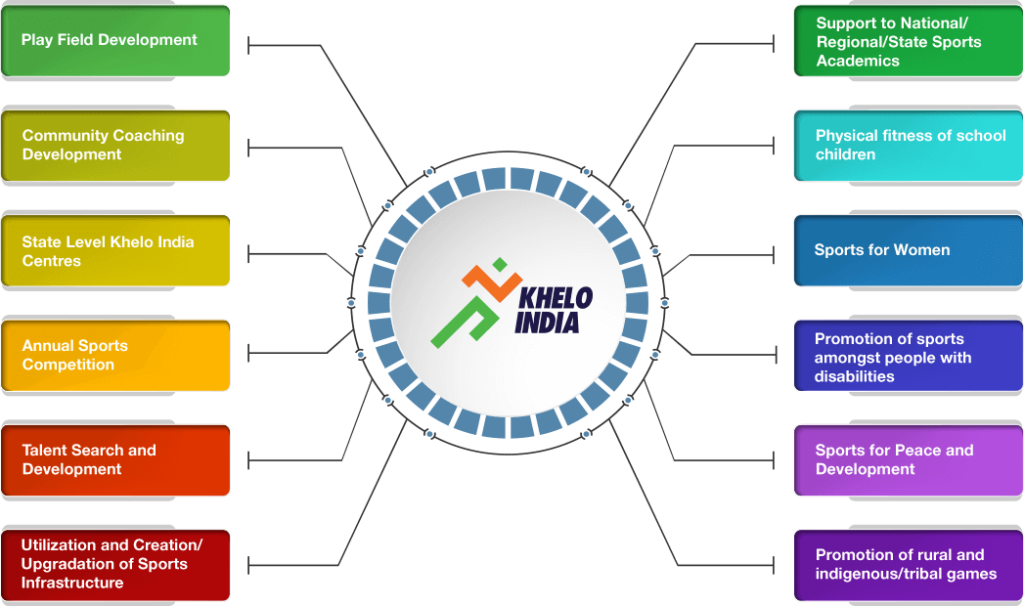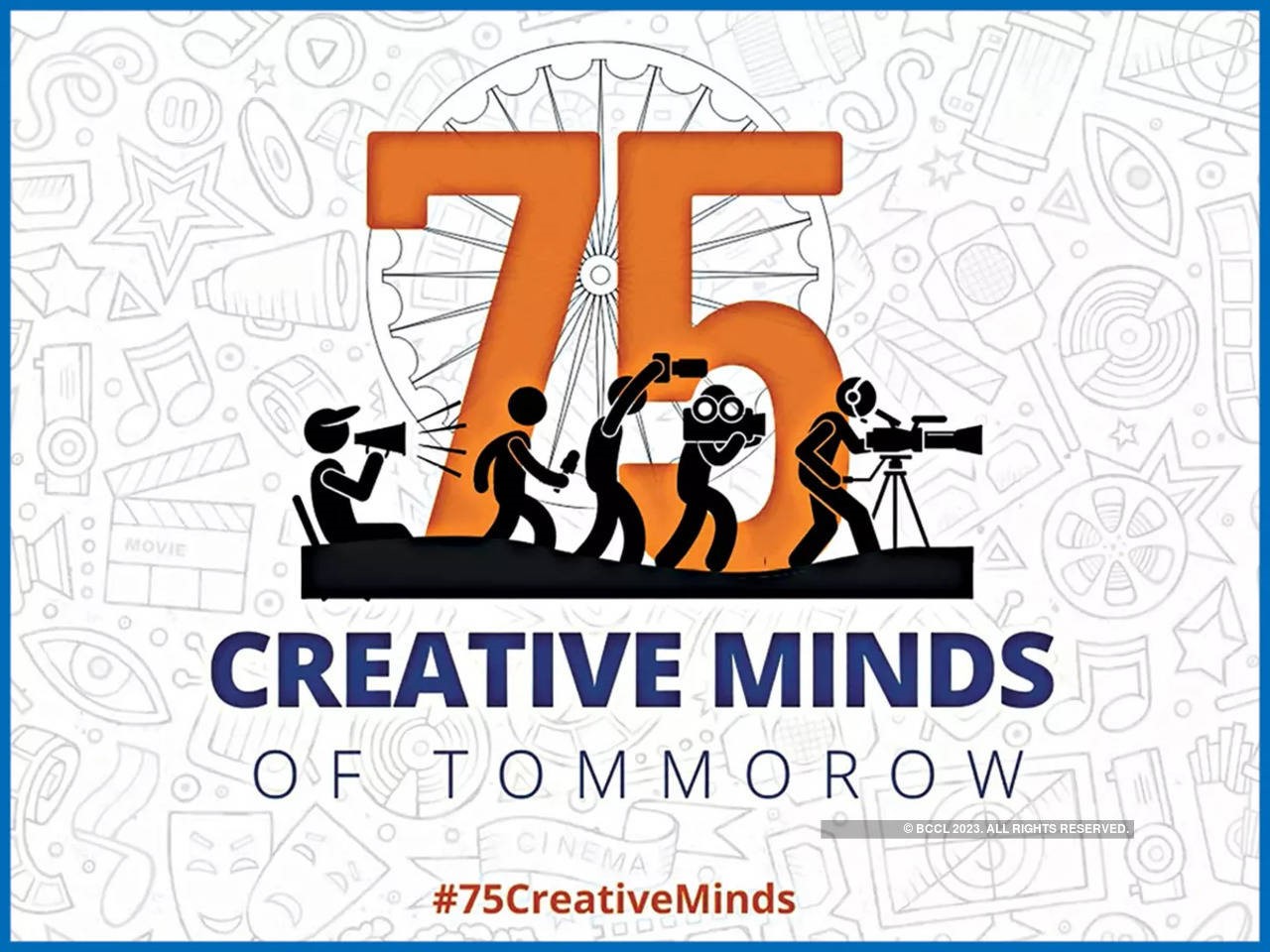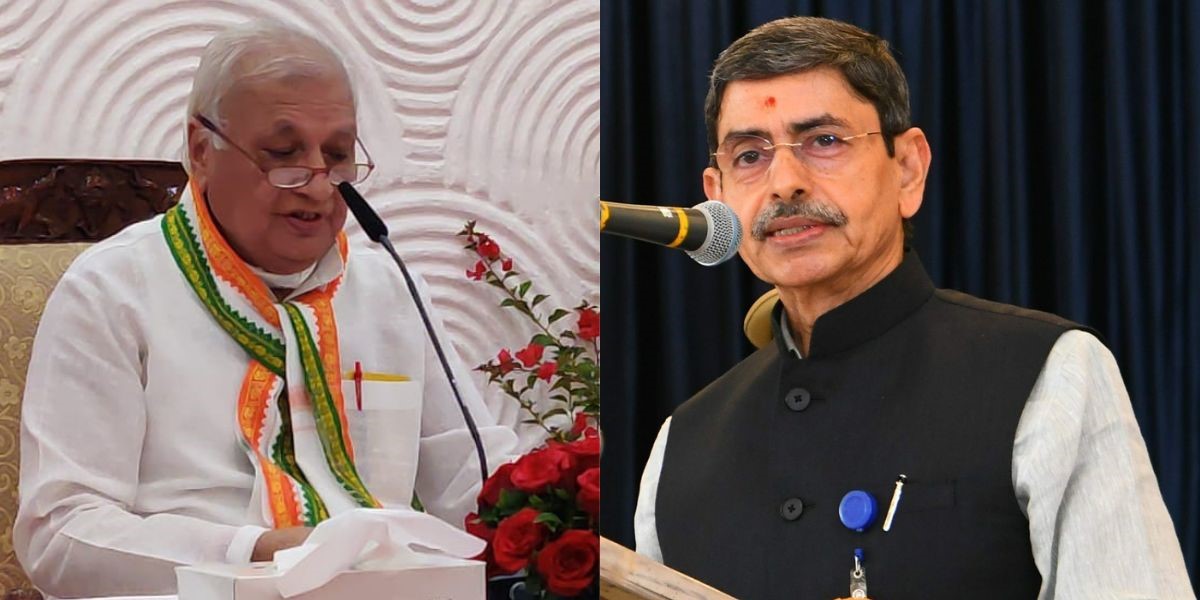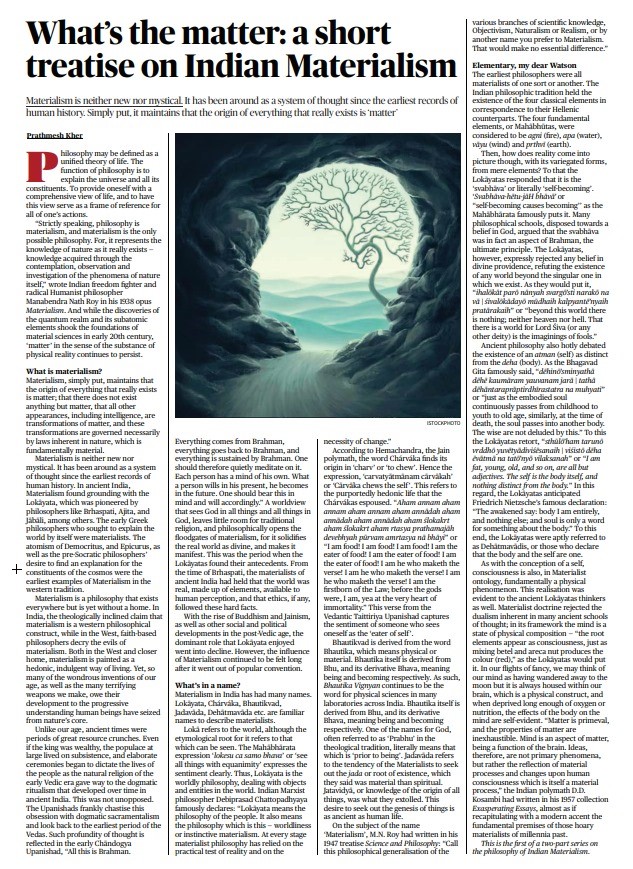Nurturing Sports Talent in Rural India
Background:
- The Indian government has shown a strong dedication to building and improving sports facilities in rural areas over the past few years.
- This commitment goes beyond giving players more power; it is also a key part of closing the gap between cities and rural areas and improving the health and happiness of rural communities as a whole.
- These efforts not only help players like Parul Chaudhary, who did amazingly well on the world stage, but they are also very important for fighting problems like drug abuse.
- These projects redirect the energy of young people from rural areas towards healthy and more satisfying activities by giving them positive and useful sports opportunities.
Indian rural sports
- Indian culture has a long history with sports like shooting, fighting, horseback riding, and chariot racing, which can be seen in epics like the Ramayana and the Mahabharata.
- In India, archery is a popular sport, and it was also an important skill during the time of the Mahabharata. Great shooters like Arjuna were taught by famous teachers like Parasurama and Drona.
- India has a great track record in sports. They have won the World Championships, the Commonwealth Games, and the Asian Games.
- Indian women shooters did amazingly well at the Asian Games 2022, getting 3 gold medals and 2 bronze medals. This showed how good Indian archers are.
- Women shooters from rural areas are role models for others. They go against gender norms and fight for more equality between men and women in sports.
Building up sports in rural areas through various initiatives
- The Indian government wants to encourage people in rural areas to play sports. They know that great sportspeople can be found anywhere and are working to make sports a part of everyday life in rural India.
- An important programme called Khelo India Scheme is run by the Ministry of Youth Affairs and Sports. Its goals are to show off athletic skills, find national talent, and give talented kids ways to grow. With a focus on players from rural areas, it provides financial aid, coaching, help with sports science, and more.
- The Khelo India Scheme also works with the right sports federations and organisations to put on national multi-sport events like the Khelo India Youth Games, the Khelo India University Games, and the Khelo India Winter Games.
- The plan focuses on promoting rural, indigenous, and tribal sports and games. It brings well-known traditional games like Gatka, Thang-Ta, Yogasana, and Silambam to a wider audience. Grants are given for building up facilities, teaching, and scholarships.
- In India, there are many programmes to promote sports, such as the National Centres of Excellence (NCOE) and the Indigenous Games & Martial Arts (IGMA) School, which provide professional teaching, sports gear, boarding, and more.
- For example, the government has made films about a number of indigenous games and shared them on digital channels and social media.
- PM Narendra Modi wants MPs to hold both indoor and outdoor sports events in their districts. This will help build a strong sports culture and a sense of fair play among people.
- At Sansad Khel Mahotsav and Mahakumbh events, there are many competitions in different areas, such as sports and artistic activities like painting and writing essays. These events help young people grow in all areas.
These programmes aim to improve people’s physical fitness, creativity, and intellectual abilities. They also want to help rural youth grow in a well-rounded way and support a culture of healthy competition and expression across the country.
- The Indian government places a high priority on enhancing and building sports infrastructure because of the significant role that sports play in the country’s overall development.
- For young athletes aspiring to participate on a national or international level, sports facilities are more than simply a place to show off their skills; they are also hubs of empowerment, unity, and possibility.
- Investing in sports facilities helps to combat obesity and other health problems by encouraging a culture of health and fitness.
- Investing in sports infrastructure in underserved regions not only helps develop local athletes, but also improves the overall health of such areas, helps bridge the gap between urban and rural areas, and ensures that the positive effects of sports are seen throughout the entire country.
- The Khelo India Scheme prioritises the “Creation and Upgrading of Sports Infrastructure,” allocating resources to build sports facilities in urban, semi-urban, and rural locations.
- Examples include the Multi-Purpose Hall in the Jhunjhunu District of Rajasthan and the Synthetic Athletic Track in the Medak District of Telangana.
- About 2741 crore have been approved for the Khelo India Scheme’s ‘Creation and Upgrading of Sports Infrastructure’ sector since 2016-17, demonstrating the government’s dedication to improving sports infrastructure.
- The government’s willingness to invest so heavily in improving the sports ecosystem shows in its commitment to providing first-rate facilities for players and fans.
- It enables the creation of world-class stadiums, swimming pools, training centres, athletic tracks, and multipurpose halls, motivating ambitious athletes and promoting a better lifestyle via sports and physical activities.
- The government fully believes in the transformative impact of sports, building a more active, healthier, and competitive India.
The Role of Sports in Preventing and Reversing Drug Abuse
- Getting kids involved in sports has positive economic effects and helps prevent drug misuse, especially in remote places.
- Spending money on sports not only produces better players, but also more mature, strong, and drug-free citizens.
- When it comes to reaching out to young people and warning them about the perils of drug use, athletes play a key role.
- Khelo India Winter Games show how sports can be a source of inspiration for young people in rural places.
- By encouraging a healthy lifestyle and encouraging the growth of healthy people via athletics, projects like the Synthetic Athletic Track in Pulwama, Jammu & Kashmir, give a voice to the region’s young.
Indian Women Athletes Are a Source of Pride
- India made history at the 2022 Asian Games by winning a record 107 medals, the most it has won in 60 years.
- More than seventy-five percent more gold medals were won by India than at the previous Asian Games (2018), and medals were won in sixteen additional sports. This demonstrates the improvement of India’s depth chart and the emergence of a hospitable sports environment.
- Female competitors played a crucial part in India’s victory, winning over half of the country’s medals.
- The Indian Prime Minister has praised the achievements of Indian women athletes, saying that the success of the women’s cricket team has set a precedent for future success for women’s sports in India.
- The ‘Sports for Women’ component of the Khelo India Scheme encourages sports among women, including initiatives like the ‘ASMITA Women’s League,’ which captures the spirit of perseverance, dedication, and accomplishment among women athletes in India.
- Roshibina Devi, a martial artist from Manipur, became the first Indian to win a silver medal in Wushu at the Asian Games, taking home the honour in 2022.
- Roshibina’s rise from a poor farming family to Wushu champion status is a testament to the strength of determination; she is a role model for young women and an advocate for women’s equality and the encouragement to follow one’s dreams.
Conclusion:
The transformative impact of sports in India is vividly demonstrated by the remarkable achievements of rural athletes and women in the field. The backing provided by the government for rural sports and infrastructure serves not only to cultivate talent but also to address the issue of drug abuse.
Athletes hailing from modest backgrounds serve as inspirational figures, showcasing their unwavering dedication. India’s sports ecosystem holds great promise, fostering health and unity for a bright future.
'75 Creative Minds of Tomorrow'(CMOT) initiative
Context:
The recent launch of the ’48-Hour Film making Challenge’ by the Union Minister of Information & Broadcasting and Youth Affairs & Sports is an extension of the ’75 Creative Minds of Tomorrow’ (CMOT) initiative.
About the Initiative:
Objective:
- The primary goal of this initiative is to offer unprecedented opportunities in the field of Media and Entertainment to the winners of the CMOT program.
- CMOT is a crucial part of the government’s strategy to inspire and guide young minds from various corners of the country.
- Recognizing the pivotal role played by ‘Creative Minds of Tomorrow’ in nurturing a vibrant creative community, the Minister commended the top 75 participants selected through a rigorous jury process.
- This year’s 75 Creative Minds of Tomorrow represent 19 different states and Union Territories of India, including locations like Bishnupur (Manipur), Jagatsinghpur (Odisha), and Sardarpur (Madhya Pradesh).
- As part of the Film Challenge, the 75 CMOT participants were organized into five teams tasked with creating short films on the theme ‘Mission Life’ within a 48-hour timeframe.
- Additionally, the CMOT participants will benefit from workshops and master class sessions conducted by renowned figures in the world of cinema.
54th IFFI:
- The 54th edition of the International Film Festival of India (IFFI) is dedicated to showcasing the zenith of global cinema and serving as a platform for filmmakers and talents worldwide.
Designed to offer a comprehensive view of the global film landscape, the 54th edition of IFFI has been hosted in Goa.
The Role of Governors in India's Federal Democracy
Context:
Recent developments in Tamil Nadu, Telangana, Punjab, and Kerala are only few examples of how the status of governors in Indian states, a vestige of the colonial past, has once again come under review.
Concerns concerning delays in Governors’ acts on Bills filed for assent by States are brought to light by the recent discontent voiced by the Supreme Court.
Historical Overview
- The historical role of governors in India has been a matter of ongoing debate. Initially designed to function as the heads of state in each region, appointed by the Union government, governors were intended to serve as state-level counterparts to the president.
- In practice, however, governors have often acted more as representatives of the Union government, frequently exerting influence over democratically elected state governments.
Constitutional Context
- A significant distinction between the president and the governor lies in their appointment and removal procedures.
- Unlike the president, elected by the country’s representatives, governors are appointed by the Union government.
- Furthermore, while the president can only be removed through impeachment, governors can be dismissed at the discretion of the Union government.
- This disparity raises concerns about the governor’s accountability and the potential for abuse of their powers.
Anticipations and Criticisms during the Constituent Assembly
- During the deliberations of the Constituent Assembly, apprehensions regarding the lingering colonial influence and the concentration of power emerged.
- Dakshayani Velayudhan and other members expressed discontent with the draft constitution’s replication of provisions from the 1935 Act, emphasizing the necessity to break away from the legacy of British imperialist administration.
- Despite these concerns, the provisions related to governors remained largely unchanged.
Ambedkar’s Rationale
- R. Ambedkar, defending the retention of existing governor-related provisions, argued that there was limited time to amend the Government of India Act of 1935.
- He emphasized that governors were meant to collaborate with, not override, state governments. However, he did not address the potential situation where governors might align more with the interests of the Centre than the state.
- As feared by critics, governors have frequently been accused of engaging in political maneuvers to favor the ruling party at the Centre.
Issues and Challenges
- In some instances, governors have exercised discretion by returning Bills against ministerial advice, raising concerns.
- The Supreme Court has stressed the constitutional expectation of prompt decision-making, using the phrase “as soon as possible.”
- Additionally, there are no specified procedures for public engagement during disagreements.
Committee Recommendations
- The Sarkaria Commission (1987) recommends limiting Governors’ discretionary power, except in rare cases, and proposes a maximum six-month period for the President to dispose of Bills.
- The Punchhi Commission (2010) suggests a six-month timeframe for Governors to decide on Bills, but these recommendations remain unimplemented.
The Path Forward
- Considering instances of Governors delaying decisions on Bills, there is a call for the Supreme Court to establish a reasonable timeframe.
- This approach aligns with the framers’ intent and ensures the effective functioning of federalism within the constitutional framework.
Conclusion
In conclusion, it is imperative to reassess and reform the role of governors in India’s federal democracy. The colonial-era institution, initially intended to check state governments, has faced criticism for exceeding its boundaries and aligning with the Union government’s interests.
Rather than advocating for outright abolition, a pragmatic approach involves judicial intervention and constitutional reform.
By holding governors accountable to the state legislature, India can fortify its democratic principles and establish a more balanced federal structure, aligning the institution with the evolving needs of a vibrant democracy.
A brief Indian Materialism treatise
Context:
Exploring a new and different perspective on Philosophy of Matter and Materialism.
Philosophy of Materialism
- Philosophy, defined as a comprehensive theory of life, seeks to explain the universe and its constituents, offering a framework for understanding and guiding one’s actions.
- Materialism, a longstanding system of thought, asserts that the origin of everything that exists is ‘matter.’
- In simple terms, Materialism posits that everything real is derived from matter, and that there is nothing beyond matter. It asserts that all other manifestations, including intelligence, are transformations of matter, governed by inherent laws of nature.
- Despite challenges from discoveries in quantum physics in the early 20th century, the concept of ‘matter’ as the substance of the physical world endures.
- At its core, philosophy is fundamentally materialistic, interpreting the world through tangible, real-world observations gained through contemplation, observation, and investigation.
- The roots of materialism can be traced back to ancient Indian philosophy, particularly with the Lokayata school, and early Greek philosophers like Democritus and Epicurus.
- Materialism, though prevalent everywhere, faces challenges and misconceptions. In India, some argue it is a Western construct, while in the West, it is criticized by faith-based philosophers.
- Despite this, materialism has contributed to the development of inventions and weapons, showcasing humanity’s progressive understanding derived from nature.
Challenging Established Views
- In ancient times, resource scarcity led to a societal focus on elaborate ceremonies and dogmatic ritualism, particularly in ancient India.
- However, opposition to this mindset existed, as seen in the Upanishads, which criticized dogmatic sacramentalism and emphasized a worldview that sees divinity in all things.
- The decline of Lokayata’s dominance with the rise of Buddhism and Jainism did not erase the influence of materialism.
- The philosophy persisted, emphasizing the real world as divine and ethical principles derived from observable facts.
Lokayata: Philosophy of Worldliness
- Lokayata, emphasizing the visible and tangible aspects of the world, is a philosophy grounded in the material world, focusing on observable objects and entities.
- It is described by Debiprasad Chattopadhyaya as the philosophy of the people, representing worldliness or instinctive materialism.
Bhautikvad
- Derived from “Bhautika,” meaning physical or material, Bhautikvad remains a term for physical sciences in many Indian laboratories.
- The Materialists’ inclination to seek the material rather than the spiritual root of existence is evident in Jadavda and Jatavidy, emphasizing the ancient human desire to explore the origin of things.
- In the expansive landscape of philosophy, materialism emerges as an enduring companion to human contemplation. As a unified theory of life, philosophy aims to elucidate the universe and provide a comprehensive framework for human actions.
Materialism, whether as Lokayata in ancient India or manifesting as Bhautikvad, remains a philosophy grounded in the tangible, observable aspects of the world, inviting humanity to explore the genesis of existence and fostering a dynamic relationship between philosophy, materiality, and the evolution of human understanding.





